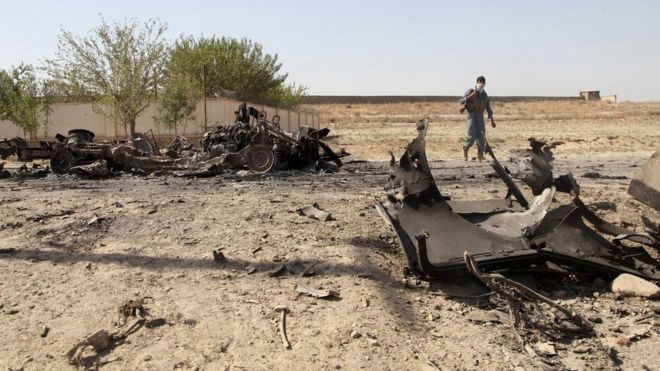
Afghan security forces launched a counter-offensive early on Thursday morning
Fierce fighting is continuing between Afghan forces and the Taliban in Afghanistan’s northern city of Kunduz, despite government claims that it had regained control of the city.
Residents told the BBC the militants had pushed back into the heart of the city and that there were intense clashes over the governor’s office.
The Taliban has denied the city has been retaken.
Kunduz was the first major centre to fall to the Taliban in 14 years.
The city’s capture on Monday by the militant group was a huge blow to President Ashraf Ghani, coming on the first anniversary of his taking power.
As heavy fighting continued on Thursday, a doctor at the local hospital told the BBC that they were struggling to cope with the high number of injured people coming in.
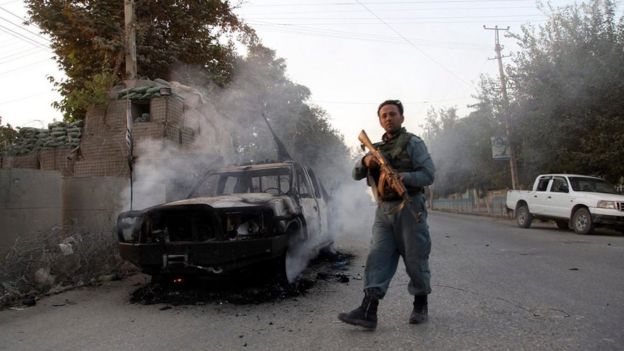
Many residents have already left Kunduz
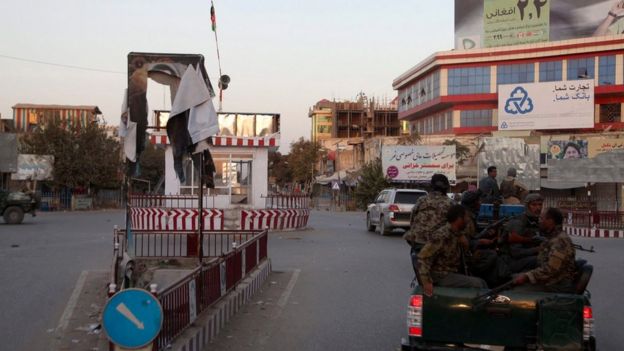
Kunduz is a strategically important city of 300,000 people
A businessman living near Traffic Square in the city centre said that Taliban flag – which had been taken down by government forces earlier in the day – had been raised over the square once again on Thursday afternoon.
He described the situation as “very, very tense” and said the fighting was still going on as darkness fell on Thursday evening.
Kunduz, with a population of around 300,000, is one of Afghanistan’s largest cities and strategically important both as a transport hub and a bread-basket for the region.
- In pictures How Kunduz ‘recapture’ unfolded
- Residents’ tales of fighting in Kunduz
- Crucial capture: Taliban’s biggest victory since 2001
- Taliban selfies: the militants posing for pictures as they seized the city
The government assault – backed by Nato special forces and US air support – began overnight with fighters infiltrating the city and launching a series of simultaneous attacks from different positions.
Government officials said on Thursday morning that the military had taken back key offices and as many as 200 Taliban fighters had been killed in the operation. Some residents spoke of seeing dead bodies of Taliban fighters everywhere.
Interior ministry spokesman Sediq Sediqqi said an operation to “clear the city” of the last pockets of resistance was ongoing and could take some days.
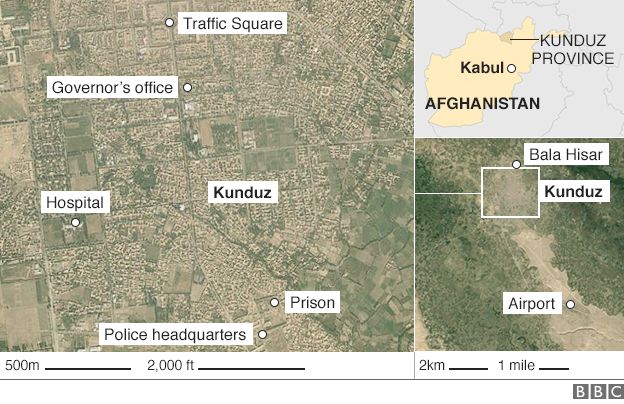
There were scenes of jubilation at dawn on Thursday as local residents emerged from their homes to thank government troops after three days of crippling food shortages.
But the mood changed during the morning as fighting broke out again. A shopkeeper near the Bala Hisar fortress told the BBC that people “are back inside their homes now and are feeling worried about the situation”.
Taliban fighters had scattered into groups of 10 and 12 and were firing at government troops “from inside people’s houses and from the top of high-rise buildings,” said Samad Ahmadi, a university lecturer, taking shelter on the outskirts of the city.
A doctor with Medecins sans Frontieres (MSF) in Kunduz, Heman Nagarathnam, told the BBC that 296 people wounded in the fighting had been treated at the MSF trauma centre since Monday. Sixty-eight of those treated were children, he said.
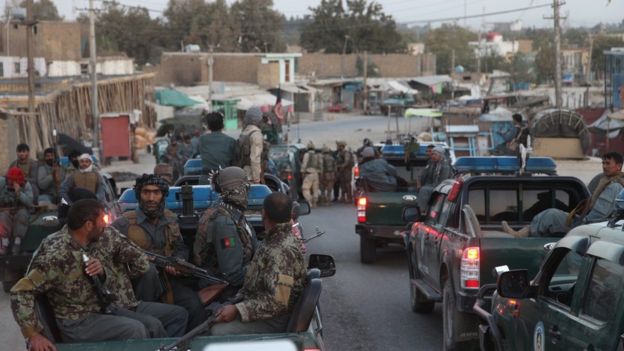
Afghan security forces drive in to Kunduz on Thursday

Reinforcements arrived from as far away as Kabul earlier in the week to help with the counter-offensive
The Taliban launched its assault on Kunduz from multiple directions on Monday night, helped by infiltrators who had entered the city during the recent Eid festival. The assault was swift and took Afghan forces by surprise.
The city’s capture is a setback for a government under pressure to show it can keep the country secure without the backing of international forces.
Jawed Ludin, the former deputy foreign minister of Afghanistan, told the BBC’s Today programme that Kunduz was known to be at risk from terror attacks and the government should have done “a better job” at protecting the city.
Afghanistan’s chief executive officer Abdullah Abdullah admitted the government must address its “shortcomings” over Kunduz.
Militant violence has increased across Afghanistan since Nato ended its combat mission there in December 2014, leaving a residual force used for training and counter-terrorism operations. Most of that force is made up of US troops and there are fears Washington plans to pull most of them out in the coming year.
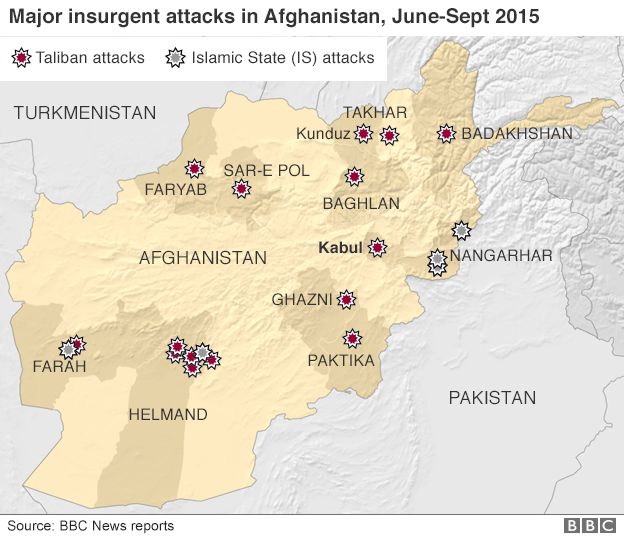
BBC
 Q FM Africa's Modern Radio
Q FM Africa's Modern Radio